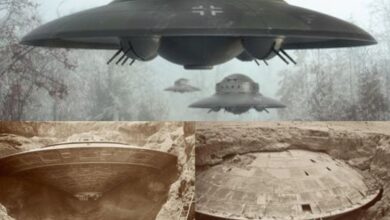Garden Of Eden Location Finally Found, And It’s Not Good
The search for the Garden of Eden, described in Genesis, has captivated explorers, archaeologists, and biblical scholars for centuries. Recent breakthroughs in archaeology and technology have brought us closer to potentially discovering its location.
The Biblical Clue: The Four Rivers
Genesis mentions four rivers—Pishon, Gihon, Tigris, and Euphrates—that flowed from Eden. While Tigris and Euphrates are well-known, identifying Pishon and Gihon has been challenging. Some associate Gihon with the Nile or the Karun River in Iran, and Pishon with ancient river systems like the Ubide or Wadi Batin in Saudi Arabia. Geological shifts over millennia have complicated the search, and Eden’s location is thought to date back to around 9,700 BCE.
The Mesopotamian Hypothesis
One prominent theory places Eden in Mesopotamia, between the Tigris and Euphrates rivers in modern-day Iraq. This region, known as the cradle of civilization, was home to early agricultural societies. Some believe the southern Mesopotamian rivers, such as the Karun and Wadi Batin, correspond to the biblical Pishon and Gihon.
The Persian Gulf Basin Theory
Another theory suggests Eden may have been submerged beneath the waters of the Persian Gulf. During the last Ice Age, sea levels were lower, and the Gulf was a fertile plain. Evidence of ancient river channels, freshwater springs, and even possible human settlements have been found on the Gulf floor, supporting the idea that Eden could have been here before being submerged.
The Armenian Highlands Theory
Another theory locates Eden in the Armenian Highlands, where the Tigris and Euphrates rivers originate. This region aligns with Genesis 2:10, and archaeological findings, such as the Göbekli Tepe site in Turkey, suggest early agricultural development, supporting the notion that Eden may have been here.
Technological Breakthroughs
Satellite imaging, LiDAR, and ground-penetrating radar have revolutionized the search. In 2022, satellite imagery revealed ancient riverbeds in the Arabian Peninsula potentially linked to the Pishon. LiDAR surveys have uncovered irrigation systems and Neolithic settlements in Mesopotamia. Underwater exploration in the Persian Gulf has identified stone structures that could be remnants of human habitation.
Genetic Research and Human Origins
Genetic studies tracking the migration of early human populations suggest that the Middle East, where agriculture began around 8,000 BCE, could have been Eden’s location. These studies align with the theory that Eden was a fertile region where domesticated plants and animals first appeared.
Climate Reconstruction and the Holocene Climatic Optimum
Paleoclimate research indicates that the Middle East was wetter during the Holocene Climatic Optimum (9,700–5,000 BCE), possibly resembling the Eden described in Genesis. Studies of ancient pollen and cave stalagmites reveal that the region once supported grasslands, forests, and diverse vegetation, ideal for early human settlement.
Conclusion
Advancements in archaeology, genetics, and climate science are bringing us closer to identifying Eden’s true location. Theories point to areas like Mesopotamia, the Persian Gulf, and the Armenian Highlands, with new evidence supporting these claims. The search for Eden may soon provide not only a historical answer but also a deeper understanding of humanity’s origins.




